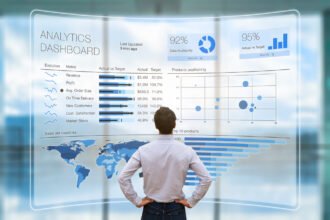Big data is changing the nature of the business world. Savvy business owners are finding more ingenious applications for new data technology.
One of the most important ways that companies can use big data is by improving employee engagement. This could lower turnover and boost morale and productivity.
Big Data Makes Employee Engagement Optimization Better than Ever
We have previously talked about the use of big data for employee monitoring. However, we haven’t delved into details on the types of data monitoring applications.
One way to use big data is to improve employee engagement.
How do your employees experience their professional lives? It’s a worthwhile question, yet one that can seem frustratingly vague or hard to measure – but it doesn’t have to be. Rather, as software companies craft new employee experience (EX) platforms with new data technology designed around communication, data management, and feedback collection, businesses now have access to the perfect tools that use big data accomplish these goals. Now, all they need are the perfect EX metrics to go with it.
If your business is ready to start collecting and acting on EX insights, the best place to start is with these 4 metrics. By engaging in deep listening and taking regular pulse surveys of staff, companies can get a handle on actionable internal data and begin transforming company culture – and professional outcomes – for the better.
Go For The Goal
Because project management software is so popular these days, most office workers operate with a list of short- and long-term goals that they’re juggling, as they navigate deadlines and balance competing demands. Not all employees are equally good at dividing their attention across these different tasks, however, and this can cause internal conflict, missed deadlines, and other problems. How should this be handled?
You should use big data technology to improve employee performance. A lot of new tools have been shown to be very effective.
Rather than immediately resorting to a Performance Improvement Plan (PIP), one way businesses can navigate conflict and challenges around deadlines is by measuring employees abilities to meet goals. This may also be integrated with effectiveness or quality measurements; for example, when an individual completes a task, does it need to be revised? How does their ability to complete a task compare to their peers? Quantifying these different performance elements can help managers modify how projects are scheduled, identify staff in need of one-on-one mentorship, and otherwise allow a team or larger organization to reconfigure itself to be more efficient.
Time Management Matters
As with the ability to meet goals, time management is a critical employee metric, and one that allows for more than just judgement. After all, a staff member with poor time management skills is more likely to feel overwhelmed, struggle in client interactions, and encounter conflicts with other staff. Employing big data tools that allow teams to record tasks and the time spent on them can help teams identify individuals who need added support or might thrive in a different department. It can also help put a stop to late projects, since everyone can see where progress is being made and where they may need to pick up the pace.
Signs Of Improvement
When discussing data-driven EX platforms, many businesses focus on how such software can improve the onboarding process or help collect exit interview insights that could drive systemic improvements. What this overlooks, however, are the other, day-to-day benefits of EX systems, among them, the ability to track employee growth and development and drive staff retention – key tasks in today’s competitive job market.
Some development metrics that should be of particular interest for business leadership include increased work output and quality, data on any development courses, conferences or programs staff have attended, and measurements from regular employee evaluations. By centrally compiling these types of information, businesses can identify staff with the greatest potential to move through the ranks, to serve as managers, or to oversee projects.
Measuring Cognitive Load
Cognitive load may seem like a nebulous thing to measure – we can’t exactly measure brain capacity in some direct way – but many experts believe that measuring cognitive load will be one of the most important EX factors over the coming decade. Why? The underlying premise is that almost all workers today are operating under growing data processing demands, and not just on the part of their computers. Rather, it’s our growing stream of digital behaviors that use big data solve challenges, including emails, chat tools, and video conferences, that are generating this cognitive load. Still, finding a way to measure this burden is challenging and means integrating a variety of different variables.
One way experts have proposed measuring cognitive load is by using computer algorithms and related tools to process communication patterns and other behaviors in the background of individual worker’s daily tasks. The goal here wouldn’t be to micromanage or even track what data they’re consuming and producing, though. Instead, it would just be to quantify it, since a computer algorithm could essentially reduce those into a given number of bytes. Those studying issues of cognitive load are specifically concerned that workers who meet their cognitive load capacity at a particular time of day may be sacrificing productivity or quality of life in other ways.
EX is a big picture measurement system, one that looks at employees at many points in their careers and at day-to-day operations. It’s also central to platforms that perform mundane tasks like information management – and despite this seemingly random assortment of elements, EX software is powering businesses into the future. By taking the standard business axiom, that data is power, and applying it to the employee lifecycle, EX tools are uncovering potential and driving productivity in exciting and innovative ways.
Big Data Technology Assists With Employee Engagement
Big data has been very effective at solving a number of challenges that employers encounter. They should use the right tools to optimize employee engagement.










